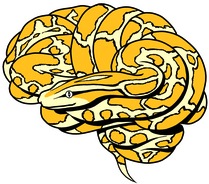Why Python?¶
From Nipy’s documentation:
The choice of programming language has many scientific and practical consequences. Matlab is an example of a high-level language. Languages are considered high level if they are able to express a large amount of functionality per line of code; other examples of high level languages are Python, Ruby, Octave, and R. In contrast, C is a low-level language. Low level languages can achieve higher execution speed, but at the cost of code that is considerably more difficult to read. C++ and Java occupy the middle ground sharing the advantages and the disadvantages of both levels.
Low level languages are a particularly ill-suited for exploratory scientific computing, because they present a high barrier to access by scientists that are not specialist programmers. Low-level code is difficult to read and write, which slows development ([Prechelt2000ECS], [boehm1981], [Walston1977MPM]) and makes it more difficult to understand the implementation of analysis algorithms. Ultimately this makes it less likely that scientists will use these languages for development, as their time for learning a new language or code base is at a premium. Low level languages do not usually offer an interactive command line, making data exploration much more rigid. Finally, applications written in low level languages tend to have more bugs, as bugs per line of code is approximately constant across many languages [brooks78].
In contrast, interpreted, high-level languages tend to have easy-to-read syntax and the native ability to interact with data structures and objects with a wide range of built-in functionality. High level code is designed to be closer to the level of the ideas we are trying to implement, so the developer spends more time thinking about what the code does rather than how to write it. This is particularly important as it is researchers and scientists who will serve as the main developers of scientific analysis software. The fast development time of high-level programs makes it much easier to test new ideas with prototypes. Their interactive nature allows researchers flexible ways to explore their data.
| [boehm1981] | Boehm, Barry W. (1981) Software Engineering Economics. Englewood Cliffs, NJ: Prentice-Hall. |
| [Prechelt2000ECS] | Prechelt, Lutz. 2000. An Empirical Comparison of Seven Programming Languages. IEEE Computer 33, 23–29. |
| [Walston1977MPM] | Walston, C E, and C P Felix. 1977. A Method of Programming Measurement and Estimation. IBM Syst J 16, 54-73. |
